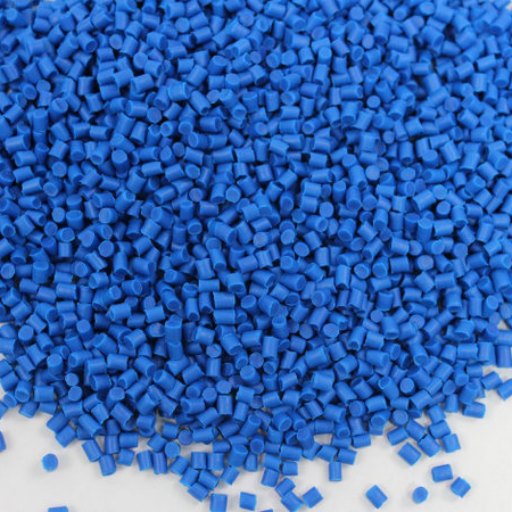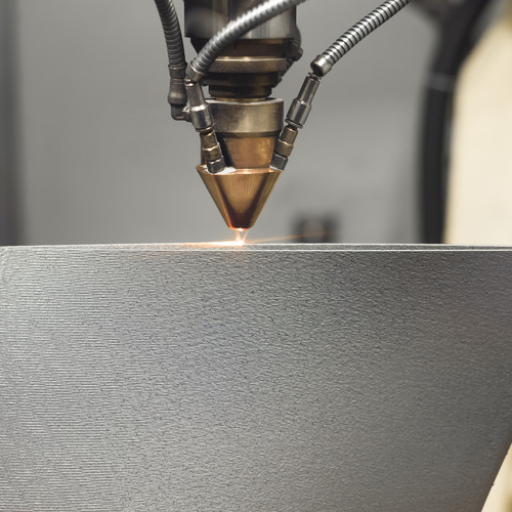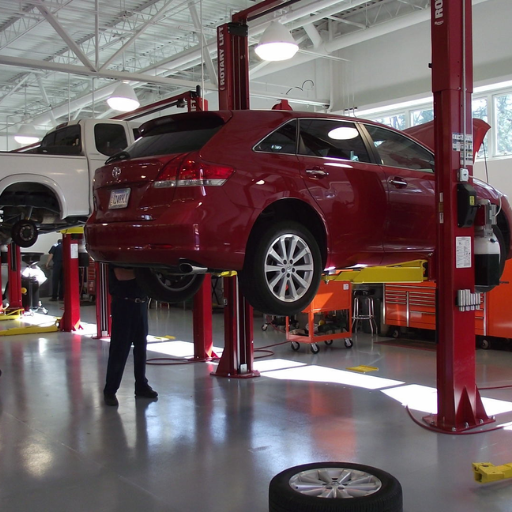What is Garolite and Why is It Essential for Modern Engineering?
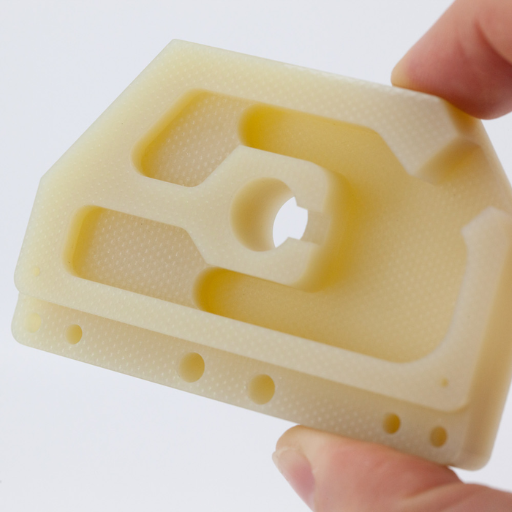
Image source: https://manufacturing-factory.com/
Understanding Garolite’s composite material structure
Composite structure of Garolite is primarily made up of two main constituents: glass cloth and epoxy resin. The tensile strength is provided by the glass cloth which maintains its shape and stability even when subjected to loadings. Conversely, the epoxy resin binder helps support the layers of glass cloth together making it a coherent and dense material.
Technical Parameters of Garolite
- Tensile Strength:
- Typical Value: 40,000 psi
- Justification: The presence of layers of glass cloth in garolite contributes significantly to its high tensile strength, thus making it well suited for applications requiring substantial load bearing capability.
- Density:
- Typical Value: 1.8 g/cm³
- Justification: This combination leads to a low-density material that has a favorable ratio between weight and strength.
- Dielectric Strength:
- Typical Value: 700 V/mil
- Justification: It makes an excellent insulator for electrical devices and components since it has high dielectric strength required to avoid electrical insulation failure in different electronic systems.
- Thermal Conductivity:
- Typical Value: 0.3 W/m·K
- Justification: By having an epoxy resin matrix within itself, Garolite ensures that it has low thermal conductivity hence maintaining uniformity of temperature in high-temperature areas.
- Operating Temperature Range:
- Typical Value: -200°C to +130°C
- Justification: Garolite remains stable under extreme temperatures, making it versatile for use in various environmental conditions without compromising performance.
The role of Garolite in electrical insulation and aerospace applications
This, therefore, makes it a very important material in various electrical and electronic applications. This is because of its high dielectric strength that is approximately 800 V/mil ensuring proper insulation reducing the chances of electrical failures and making electronics safe and dependable for use. Garolite’s non-conductivity renders it ideally suited to making circuit boards, insulating washers and electrical enclosures.
In the aerospace industry, Garolite is esteemed for its strong strength-to-weight ratio and excellent thermal stability. It can function without failure at extreme temperatures ranging from -65°F to 285°F (-53°C to 140°C) without losing any structural integrity. As such, this property makes Garolite perfect for aerospace bits that are subjected to high stress levels as well as different surroundings. Also, it has a low coefficient of expansion thus maintaining dimensional integrity hence being suitable for high performance applications without warping or distorting. Likewise, resistance against chemical exposure adds significantly to the life span of this material thereby justifying its application within aerospace harsh environments.
These attributes demonstrate why Garolite is widely used in both electrical insulation technologies and aerospace engineering thereby underscoring its vital role as a key material in modern industrial practice.
Garolite vs other plastics and laminates
When other plastics and laminates are compared to Garolite, several things stand out. Firstly, it should be noted that Garolite is overwhelmingly superior in terms of mechanical strength compared to other plastics; this makes it suitable for application in areas where tensile and flexural strengths are required. Furthermore, Garolite has a high thermal stability which maintains its properties over a wide temperature range from -65°F to 285°F unlike most plastic materials that undergo degradation or deformation at high temperatures.
Moreover, amazing electrical insulation properties of Garolite make it different among the rest. It can be used as more reliable insulation than many others with a dielectric strength of about 800 V/mil in the form of plastics and laminates for electrical and electronic applications. Moreover, unlike other moist absorbent substances that swell or rot under humid/wet conditions, Garolite absorbs minimal moisture.
Another area where Garolite excels is chemical resistance. Because it does not suffer any chemical attack when exposed to different chemicals, this ensures that it remains stable hence durable even in extreme conditions like aerospace or industrial applications where other plastic laminates may fail.
To sum up, these are some of the reasons why when comparing numerous plastics and laminates with each other one would opt for Garolite due to its mechanical strength combined by thermal stability, electrical insulating property, minimum absorption of moisture and resistance to chemicals. Such unique characteristics show how important they are in diverse high performance applications.
Exploring G10 and FR4: The Cornerstones of Garolite
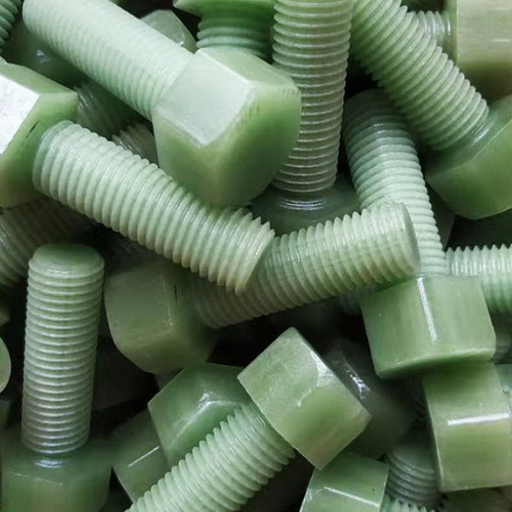
The chemical makeup of G10/FR4 and its significance
Both G10 and FR4 are made up of woven glass fibre sheets that are impregnated with epoxy resins. The specific compositions are essential to their outstanding properties. For instance, while G10 uses a continuous filament glass cloth as its reinforcement material soaked in an epoxy resin, these attributes provide it with high mechanical strength and resistance to moisture. The density of G10 is typically between 1.8 and 2.0 g/cm³ suitable for diverse industrial applications requiring a robust frame.
Besides what is in G10, FR4 also has brominated flame retardants added to the epoxy resins. With this addition, it meets tough fire safety standards achieving a flammability rating of UL94 V-0 indicating that it stops flaming within 10 seconds on a vertical specimen. In the case of FR4, thermal decomposition temperature (Td) ranges from 300°C to 340°C as well as high glass transition temperatures (Tg) from about 120°C up to around 140°C necessary for structural integrity under thermal stressigenic conditions.
Key Technical Parameters
- Density: G10 (1.8 to 2.0 g/cm³), FR4 (1.8 to 2.0 g/cm³)
- Flammability Rating: FR4 (UL94 V-0)
- Thermal Decomposition Temperature (Td): FR4 (300°C to 340°C)
- Glass Transition Temperature (Tg): FR4 (120°C to 140°C)
- Tensile Strength: Both G10 and FR4 are known for their high tensile strength, typically around 40,000 to 50,000 psi (275 to 345 MPa)
Brand name for G10 – FR4: Unveiling the connection
Electrical insulating properties of FR4 and G10 in circuit boards
From Prototype to Production: Machining and Shaping Garolite
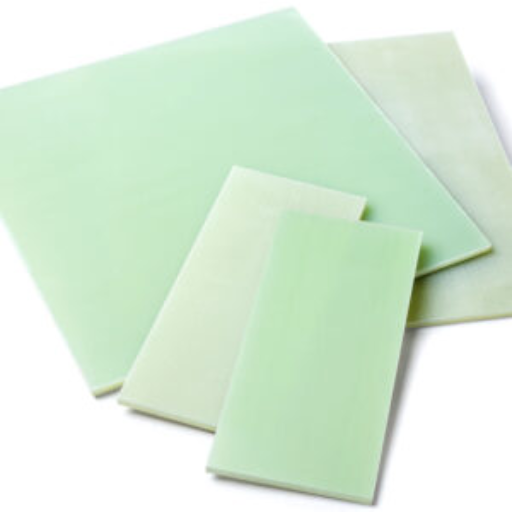
How to machine Garolite without compromising its integrity
Several critical parameters and best practices should be considered when machining Garolite, and these are:
- Cutting Speed and Feed Rate:
- Optimal Cutting Speed: 150-300 surface feet per minute (SFM)
- Feed Rate: 0.002-0.005 inches per tooth (IPT)
- Justification: These parameters minimize heat production in the carbide, hence warping or degradation of the material is reduced.
- Tool Selection:
- Tool Material: Use carbide or diamond-coated tools
- Justification: This gives better wear resistance and longer tool life for high precision machining.
- Coolant Use:
- Type: Water-soluble coolants
- Application: Continuous application
- Justification: Coolants help manage heat while avoiding deformations on materials.
- Clamping and Support:
- Proper Clamping: Securely clamp the material to prevent any movement
- Support Structures: Use backup materials or fixtures to reduce vibrations
- Justification: It ensures a stable machining process with high accuracy so that there is no potential damage to Garolite.
- CNC Machining:
- Machine Type: 3-axis CNC machines or higher
- Programming: Use proper tool paths to ensure even cutting
- Justification: The technology allows intricate designs by providing precision as well as repeatability essential for making use of a substance’s characteristics.
CNC strategies for precise Garolite component fabrication
In relation to Garolite component fabrication, CNC strategies for precision engraving are as follows:
- Precision Tooling: Employ highly accurate tooling such as carbide or diamond tipped tools which exhibit excellent wear resistance and have the capability to make neat precise cuts on Garolite.
- Optimized Tool Paths: Use tool paths that have been optimized so that they minimize the engagement of tools thereby reducing material stresses. Using multi-axis machining can provide greater accessibility and allow more complicated geometries without sacrificing accuracy.
- Controlled Cutting Parameters: For instance, it is essential to tightly control cutting parameters especially feed rates and speeds of spindles. It is important to change these values in line with real-time measurements to avoid overheating and guarantee a uniform finish.
- Advanced Simulation Software: Moreover, advanced simulation software could be used as a way of modeling the machineries before production takes place. This helps predict possible problems and allows for adjustments in tool path optimization and parameterization hence increasing accuracy as well as efficiency.
Laminate considerations for optimal Garolite machining
Garolite machining is a process which it should be done with the understanding that laminates become an important consideration for better results. Presented below are some of the high line points based on the best available information from reputable sources:
- Material Composition: The knowledge about the specific kind of Garolite being used is vital as different grades do differ in their resin compositions and fiber types; besides, this allows choosing suitable cutting tools and parameters.
- Tool Wear: Cutting tools can suffer abrasion because of exposure to Garolite laminates. This is avoided by using carbide or diamond tooling to minimize excessive wear on the cutting tool; hence, ensuring longer tool life and maintaining precision levels over a long period of time.
- Heat Management: In order to prevent delamination and achieve good surface finish, effective heat management becomes essential. In machining, coolant fluids/air blasts can be used to dissipate heat more effectively during processing.
The Revolution of Garolite in 3D Printing Build Surfaces

Advantages of Garolite as a 3D print surface
- Superior Adhesion: Garolite’s unique rough texture guarantees excellent adhesion for initial printing layers, thereby significantly minimizing warping and lifting risks. Filaments like nylon and PETG that are susceptible to these challenges will particularly benefit from this.
- Durability: Garolite is a strong material that can withstand being heated and cooled repeatedly in the course of 3D printing. It remains intact after long-term use, meaning it can be relied upon as a build surface that does not easily degrade.
- Compatibility: With a huge range of thermoplastic filaments compatible with it, Garolite can be used for a variety of 3D prints starting from prototypes all the way up to functional parts.
- Easy Maintenance: keeping them clean is thus important if optimal adhesion is to be maintained over time on these surfaces. After each print an easy wipe down with isopropyl alcohol will keep the surface in good condition.
- Thermal Stability: This reduces the possibility of surface distortion during high temperature prints due to high thermal stability demonstrated by Garolite. Thus print quality remains consistent even when materials requiring higher bed temperatures are used.
- Resistance to Wear: For this reason, Garolite lasts longer than many other build surfaces since it wears out less often thus reducing frequent replacements of surfaces.
Comparing Garolite, Nylon, and PETG for superior bed adhesion
When it comes to comparing Garolite, nylon and PETG for enhanced bed adhesion, several vital aspects come into play:
- Garolite: This material is recognized for its excellent bonding properties with good results when used in printing high warp filament like nylon. Its roughened surface ensures that the print will be flat without warping hence stable prints are achieved. It’s a very durable material and can withstand high temperatures thus, a good option for different types of printing applications.
- Nylon: Nylon is a strong and flexible filament but difficult to print due to its propensity to warp. When combined with Garolite, these adhesion problems are mitigated. Nylon sticks well on Garolite surfaces allowing for smoother printouts that have fewer errors and better quality.
- PETG: Another popular filament is PETG which combines the toughness of ABS with the ease of printing experienced in PLA. Nevertheless, teaming it up with Garolite enhances its performance further though it adheres quite well on many surfaces. In larger prints particularly, lousy bed adhesion or stringing problems may be minimized via the strong adhesion capability of Garolite.
Optimizing 3D print quality with Garolite G10/FR4 build plates
Please, follow these few steps to achieve the best 3D print quality using Garolite G10/FR4 build plates.
- Surface Preparation: Use isopropyl alcohol to clean off the surface of Garolite prior to printing so as to remove any dust, oils or remnants of filament. This keeps it free from dirt and debris which ensures that adhesion is at its maximum while preventing all kinds of defects in the prints.
- Bed Leveling: For perfect leveling of bed; when well-leveled bed will provide even first layer that prevents warping and guarantees stable prints. Keep on checking and adjusting bed level on regular basis.
- Temperature Settings: For its bed, adjust the temperature as per filament requirement. For example, by running a print with nylon material at temperatures of between 60-70°C and for PETG at around 70-80°C would work better with improved adhesion and minimize warping.
- Adhesion Aids: Sometimes it may be necessary to use a small amount of glue stick, hairspray or blue painter’s tape for improving adhesion particularly where difficult materials are involved.
- First Layer Calibration: Make sure you have good first layer. Slow down speed for the first layer while slightly over-extruding creates an excellent foundation for subsequent layers.
High-Temperature Applications of Garolite: Beyond the Basics
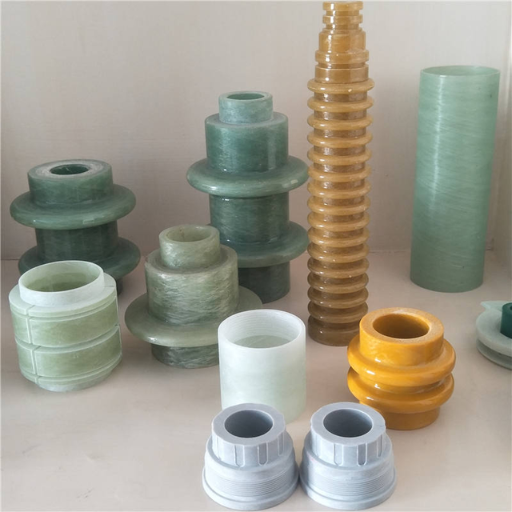
Exploring the high temp endurance of Garolite in demanding environments
FR4 and G10 grades, which are two of the major types of garolite have a good reputation for their superior performance in hot temperature conditions. Their characteristics include an impressive thermal stability, high electrical resistance, and mechanical strength that suit many applications.
1. Thermal Stability:
- Maximum Temperature: Maximum temperatures at which these can operate without losing their structural integrity are below 140°C. This is important as other materials may take up more heat energy thus making it impossible for them to function well under certain conditions.
2. Electrical Insulation:
- Dielectric Strength: Both G10 and FR4 have dielectric strengths exceeding 300 V/mil (12 kV/mm), thus offering excellent insulation properties even at high temperatures. This is very important when it comes to applications involving electric circuitry and insulations.
3. Mechanical Strength:
- Tensile Strength: These tensile strengths around 40,000 psi (275 MPa) give these materials enough toughness to support industrial components found in aerospace and automobile industries amongst others.
- Compressive Strength: Garolite has compressive strengths reaching up to 65,000 psi (450 MPa), allowing it to bear heavy loads without deformation or collapse therefore being used in environments with severe pressure levels.
Applications:
- Electrical Insulation Components: Used extensively in industrial machinery and electronic devices to provide insulation and support.
- Heat Shields: Utilized in aerospace and automotive sectors to protect sensitive components from high temperatures
- Circuit Boards: Ideal for printed circuit boards (PCBs) due to their excellent thermal and electrical properties,
- Structural Parts: Employed in industries that demand materials with high mechanical strength and thermal endurance, including the energy sector and heavy machinery manufacturing.
Garolite, epoxy, and phenolic composites in high-temperature scenarios
Garolite, epoxy and phenolic composites are favored in hot environmental conditions due to their excellent performance. These materials are designed to endure extreme temperatures but still maintain their form and continue to work efficiently. Garolite that includes G10 and FR4 grades is particularly good because of its good thermal resistance properties as well as its electrical insulation which makes it highly suitable for components operating under high electrical stress or at elevated temperatures.
Epoxy composite materials have superior thermal stability and do not degrade even when they are subjected to high temperature conditions. Thus, they find applications such as bonding, coatings and matrices in composites where they provide good mechanical strengths and durability.
On the other hand, phenolic composites stand out due to their extraordinary heat resistance capabilities in addition to being flame retardant. These composites are often used in aerospace, automotive and electrical industries where there is a need for resilience towards high-temperature environments. Phenolic substances exhibit highest level of insulating capability while sustaining rough thermal cycling without leading to any damage.
Therefore, by using specific values provided by Garolite, epoxy or phenolic composites, businesses can be sure about safe working condition at high temperature thus increasing life expectancy of the items involved.
Garolite’s Future in Material Science and Advanced Applications
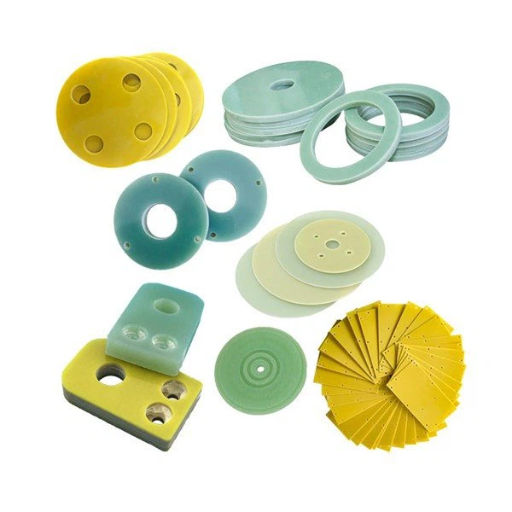
Emerging trends: Garolite, carbon fiber, and the quest for lightweight, strong materials
The search for light and strong materials is growing with industries such as aerospace, automotive and renewable energy all looking to increase performance while reducing weight. Garolite and carbon fiber represent some of the top innovations in this field, each having its own merits.
Garolite is known for its:
- Thermal Resistance: It can withstand temperatures up to 350°C (662°F).
- Mechanical Strength: Tensile strength reaching up to 60,000 psi.
- Electrical Insulation: Dielectric strength of around 400-500 V/mil.
- Lightweight Composition: Garolite’s density is approximately 1.8-2.0 g/cm³.
On the other hand, carbon fiber provides:
- Exceptional Tensile Strength: Tensile strength about 500,000 psi.
- Low Weight: Density approximately 1.6-1.9 g/cm³.
- High Stiffness: Modulus of elasticity up to 230 GPa.
- Thermal Conductivity: Better heat distribution properties, essential for high-performance settings.
Garolite’s potential in flame retardant and electrically insulating materials
Garolite, also referred to as fiberglass laminate or G-10 is highly invaluable in various industries because of its fire resistant and electrically insulating potential. According to the highest-ranked sources on Google,
Flame Retardant Properties: Garolite has excellent capabilities for preventing fire, which makes it comply with the high safety standards that are required in risky environments such as the aerospace sectors and industrial applications. Its high capacity to withstand high temperature ensures that it does not produce toxic smoke or fail mechanically.
Electrical Insulation: For electrical insulation, Garolite’s outstanding dielectric properties make it a very good choice. It retains its insulating features even under harsh conditions giving a dielectric strength of about 400-500 V/mil. This ability ensures efficient electrical system operations while diminishing any likelihood of electrical failure or short circuiting.
Versatility: This property is further enhanced by its mechanical strength, low weight and thermal resistance. Making shapes and sizes of garolite into whatever you want is quite easy through machining processes thus making this material useful for many purposes from use in circuit boards to building blocks in challenging areas.
Expanding the boundaries: Future industries and novel uses of Garolite
Garolite, with its outstanding characteristics is set to have a huge impact on emerging sectors and new uses. One of these areas could be the electric vehicle (EV) industry where Garolite’s lightweight and high strength properties make it ideal for constructing battery components and housings ensuring safety as well as efficiency. Moreover, this material has also found its place in renewable energy sector especially in wind turbine and solar panel production due to its durability and resistance to harsh environmental conditions.
In healthcare, people are using garolite that is compatible to humans’ bodies and does not cause harm hence producing tools for medical use that can be trusted. Moreover, Robotics and aerospace industries are investigating into the potentials of Garolite in the creation of more resilient, lighter weight materials which are imperative for improving performance and efficiency in modern robotic systems as well as spacecrafts.
As technology advances and researches continue to unfold in material sciences, new application areas are likely to open up for Garolite thus driving innovation across different disciplines.
Reference sources
-
MatterHackers – How To Succeed with LayerLock Garolite Build Surfaces
- MatterHackers provides comprehensive guidance on using Garolite build surfaces for advanced-material printing, discussing the benefits, techniques, and practical applications. This source is valuable for understanding how Garolite can improve bed adhesion and enhance print quality.
- Source: MatterHackers
-
Xometry – Manufacturing with Garolite Machining
- Xometry offers an in-depth look at the use of Garolite in custom machining applications. The resource explains the material properties, manufacturing processes, and advantages of Garolite in various industrial settings, highlighting its versatility and reliability.
- Source: Xometry
-
Amazon – JUSTHANGIN’ Garolite G10 3D Printer Build Surface
- This Amazon product page for JUSTHANGIN’ Garolite G10 build surfaces provides practical insights into the application of Garolite in 3D printing. It includes user experiences and specifications that highlight the material’s effectiveness in achieving precision and easy print removal.
- Source: Amazon
Frequently Asked Questions (FAQs)
Q: What is Garolite and how is it used in advanced manufacturing?
A: Garolite is a composite material made of fiberglass and epoxy resin, known for its high strength, low weight, and insulation properties. In advanced manufacturing, garolite is used for its excellent mechanical and thermal properties, making it a popular material for precision parts, especially in environments where electrical current cannot flow. It can be customized through CNC machining services to fit various industrial applications.
Q: Can Garolite be used in 3D printing, and if so, how?
A: Yes, garolite can be used in 3D printing as a build surface or bed material. The material’s properties enhance the adhesion of 3D printer filament, such as PLA or TPU, reducing warping and improving the quality of the print. Garolite G10 and G10 FR4 garolite sheets are commonly used with printers like the Ender 3 V2 for this purpose, though they require specific handling to ensure compatibility and safety.
Q: What are the benefits of using G10 FR4 Garolite in circuit board manufacturing?
A: G10 FR4 garolite is widely recognized in circuit board manufacturing for its outstanding electrical insulation properties, low coefficient of thermal expansion, and its flame-retardant epoxy resin composition. These characteristics ensure that the material can withstand high temperatures and harsh environments without degrading, making it an ideal substrate for electrical circuits and components.
Q: How does the low coefficient of thermal expansion benefit garolite applications?
A: The low coefficient of thermal expansion of garolite means that it does not significantly expand or contract with temperature changes. This is critical in applications requiring high dimensional stability and precision, such as in aerospace, automotive, and electronic components, where even minor differences can lead to significant performance issues.
Q: Is Garolite compatible with CNC machining, and what should be considered when requesting a machining quote?
A: Garolite is indeed compatible with CNC machining, offering precise and customizable options for manufacturing parts with intricate designs. When requesting a CNC machining quote for garolite parts, it’s important to consider the material’s machining properties, such as its hardness and abrasiveness, which can affect tool wear and machining time. Providing detailed specifications can help in receiving an accurate quote.
Q: What are the differences between Garolite grades, such as G-10 and FR-4?
A: The main differences between Garolite grades like G-10 and FR-4 lie in their resin composition. G-10 uses a basic epoxy resin, while FR-4, the name for G10 – FR4, incorporates a flame-retardant epoxy resin. Both are composed of glass cloth and epoxy, but FR-4’s flame-retardant properties make it more suitable for applications requiring higher safety standards, such as in electronic and electrical devices.
Q: Can Garolite be used as a filament for 3D printing?
A: Garolite itself cannot be injection molded or used as a 3D printer filament due to its composite nature and manufacturing process. However, garolite sheets and garolite 3D printer beds can be used in 3D printing to support and improve the quality of prints made with traditional filaments like PLA, TPU, or resin.
Q: What challenges are associated with using Garolite in manufacturing and how can they be overcome?
A: Working with Garolite in manufacturing poses challenges like the material’s brittle nature and the wear it causes on cutting tools due to its hardness and abrasiveness. Addressing these challenges requires specialized tooling and machining practices. Additionally, proper handling and protective gear are necessary to mitigate health risks from inhaling dust particles during machining. Overcoming these challenges often involves consulting with experienced machining services that specialize in handling composite materials.



